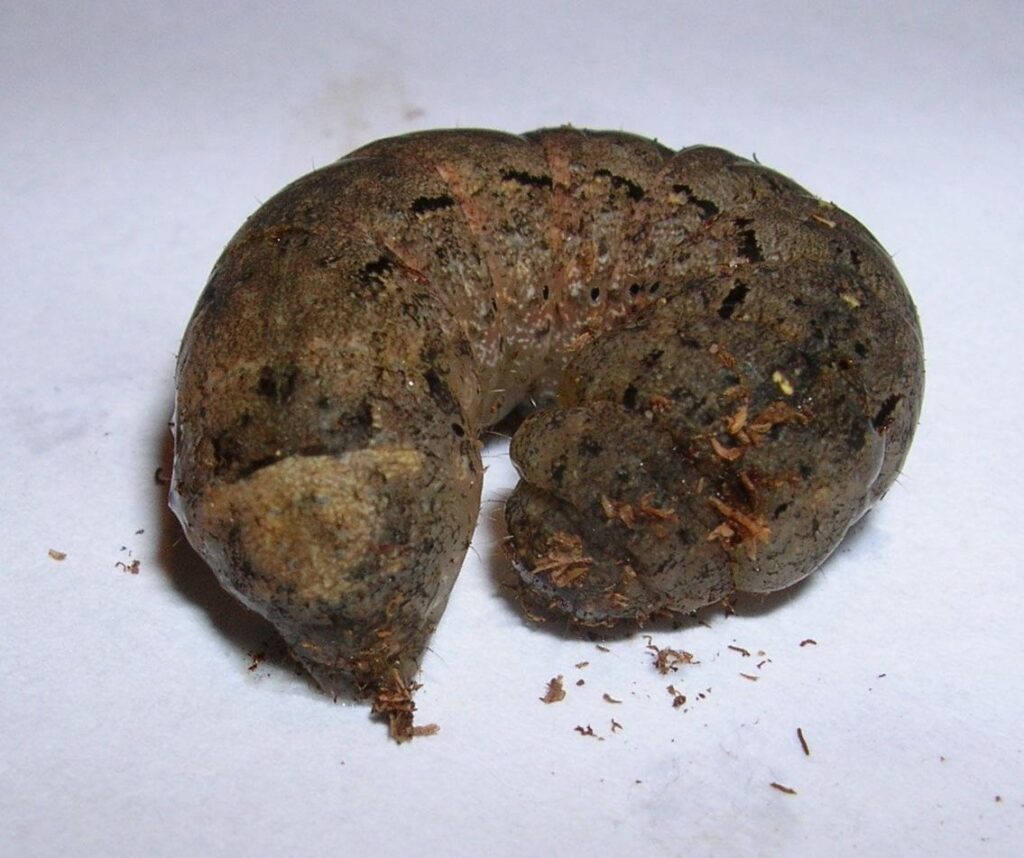by Ilse Gebhard, KAWO member
Any day that I am presented with a mystery of nature to be solved is a great day. Late May, a few years ago, a friend brought me not only a native plant from her yard but also a caterpillar that was hiding in the soil that she dug up along with the plant.

The caterpillar was a rather drab tan and kept digging into the dirt. I knew that some moth species pupate in the ground and that others hide by day and only come above ground to feed during the night. Was this individual getting ready to pupate or did I need to feed it first?
I placed the caterpillar in a quart deli container, covered it with some of the soil and wood mulch from the plant, placed a dandelion leaf on top of the soil, and closed the container with a lid that had small holes for air. When the host (food) plant is not known, dandelion is a good first choice to offer.

By golly, the dandelion leaf was gone the next morning. Next I added two leaves, and the following morning those were gone. Finally I added three leaves, but that was more than the caterpillar could consume in one night, as part of a leaf was sticking out of the dirt the next morning. After another night of partly consuming three leaves, feeding stopped on subsequent nights.
The pupal stage is always a waiting game. What and when will something emerge? Will it be a moth, a parasite or nothing? Will it be this year or next spring? I sifted through the dirt and found the pupa, took a photo, and reburied it.

This individual was very obliging and emerged three weeks later. While the caterpillar was quite plain, it did have some small markings. Also, its shape and texture, stout and smooth, corroborated the identification of the moth that emerged – Peridroma saucia, commonly known as Variegated Cutworm. Also known by the prettier name of Pearly Underwing, the hindwing is off-white and its wingspan is 1.6-2.2 inches. There are two generations in the US, and it can overwinter at the pupal stage.
P. saucia is found worldwide and its larva is a generalist feeder as it is known to feed on 100+ species of plants. It gets its “cutworm” name from its habit of cutting plants at ground level and pulling them underground to feed on. It can be an agricultural pest on crops such as cabbage, carrot, corn, potato, tomato, and wheat.
Peridroma saucia photos by Ilse Gebhard.
Reference Books:
Peterson Field Guide to Moths of Northeastern North America, David Beadle & Seabrooke Leckie.
Caterpillars of Eastern North America, David L. Wagner.
Owlet Caterpillars of Eastern North America, David L. Wagner, Dale F. Schweitzer, J. Bolling Sullivan & Richard C. Reardon.
